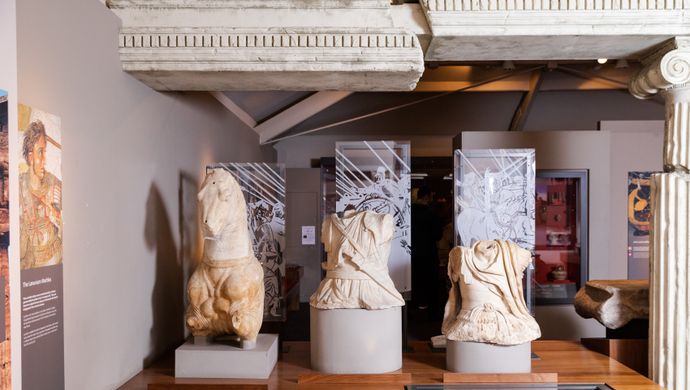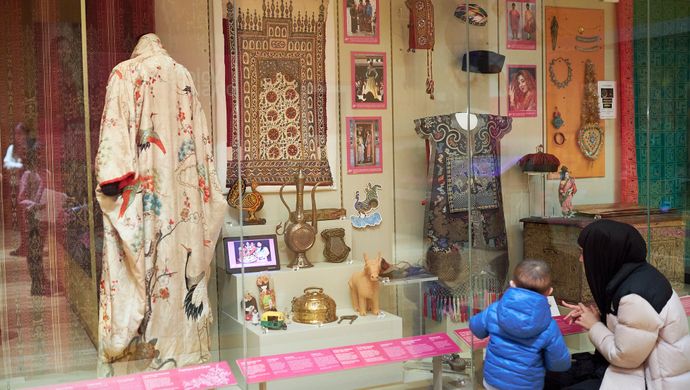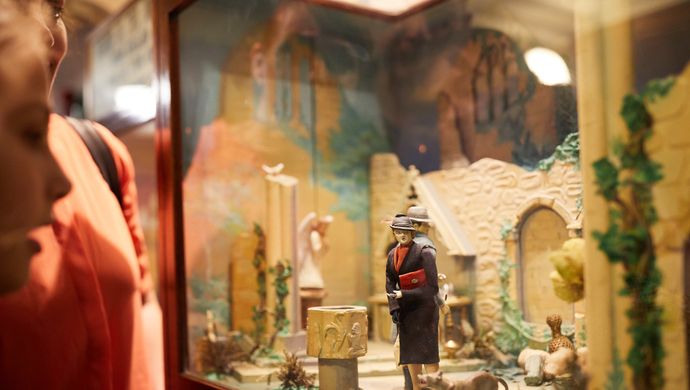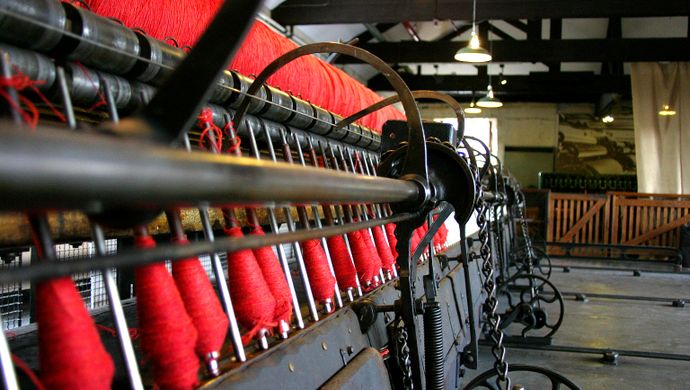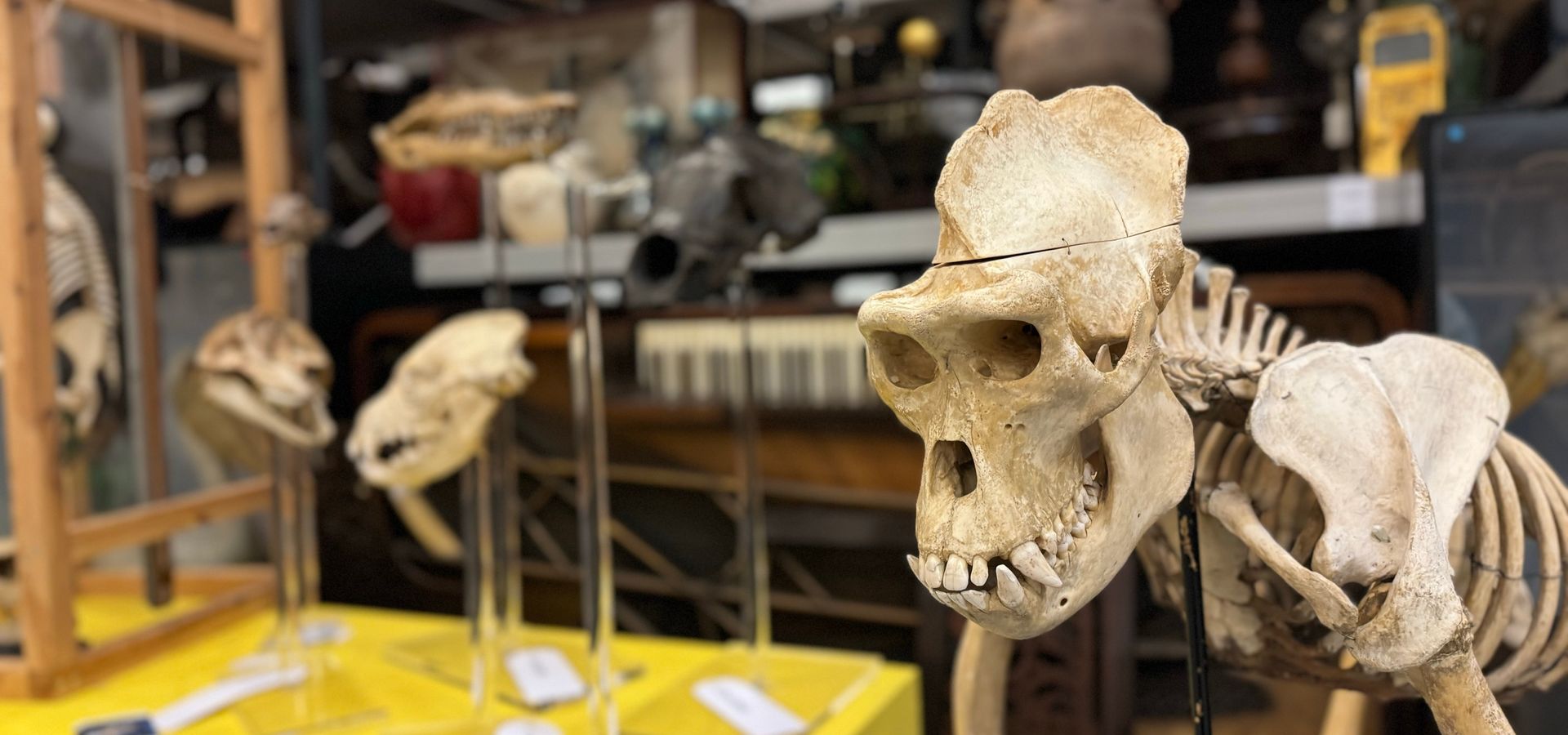
Natural Science
The Leeds natural science collection comprises around 800,000 specimens.
It is hugely diverse in terms of subject area, specimen type, and taxonomic range. It is Designated as being of national and international significance.
The geology collection includes a wide range of fossils, minerals, rocks and meteorites, telling the story of our planet’s history. Yorkshire’s geology is very well represented, and the mineralogy collection holds some significant rarities alongside a collection of cut and polished gemstones. Highlights of the palaeontology collection include a Giant Deer (formerly Irish elk) skeleton, ichthyosaur skeletons, and the Armley Hippo.
Particular strengths include our conchology collection; taxidermied specimens of endangered species including the snow leopard and giant panda; skeletons from extinct animals such as the thylacine, dodo, great auk and moa; one of the world’s best collections of fig wasps and thousands of mounted plant specimens and seeds.
A portion of our collection is on display in the Life On Earth gallery at Leeds City Museum. You can see many of our specimens at Leeds Discovery Centre on one of our free store tours and on our Google Arts & Culture page.
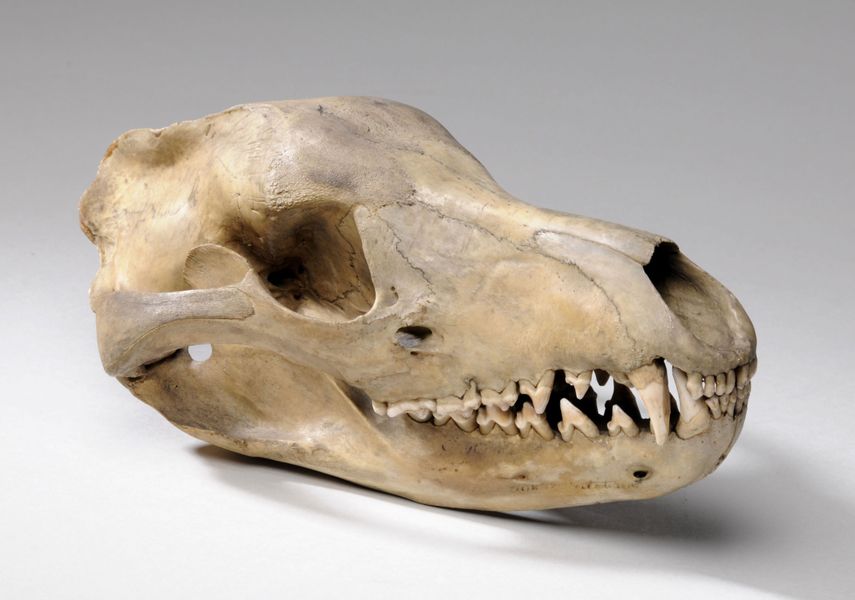
Collection highlight
Thylacine
At Leeds Museums and Galleries we have remains from six Thylacines, also known as Tasmanian Tigers or Tasmanian Wolves. Thylacines were driven to extinction, with the last remaining individual dying in Hobart Zoo in 1936.
Thylacines were marsupials, like kangaroos, so the females had pouches to keep their young safe. They were carnivorous, and viewed as pests by farmers. A number of factors are thought to have led to their extinction, including competition with dogs introduced by Europeans, hunting by farmers, and disease.
Sadly Thylacines can now only be viewed in museum collections. Every day, more species are being driven to extinction, with only a few being memorialised in museum collections.

